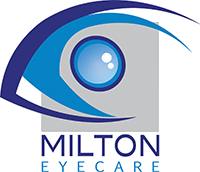Dr. Kamaleswaran answers your questions about pediatric eye care
1) From what age should a parent be bringing in their children for an eye exam?
Once at 6 months, and then every year thereafter
2) Why is it important to bring a child in at such a young age?
To ensure proper development of the visual system.
3) What is the difference in terms of the examination process when you are checking the eyes of young children?
We use more objective testing and adapt the techniques to be more child friendly. To our young patient, it is more like playing a game with the doctor!
4) Are there any signs that parents should be looking out for that would point them to making an appointment with their optometrist?
Constant rubbing of the eyes or of one eye, no fixation or following of objects in front of them, eye turning in or outwards, holding objects really close to the face, delayed milestones such as walking.
5) Do you find that some parents can express hesitancy in bringing in young children? What causes that hesitation?
Yes definitely, many parents are concerned that the child may be too young to participate in the exam to provide any valuable feedback. But in fact, the objective testing that we do can provide us with a lot of information.
6) How does school play a role in this?
Poor vision can lead to difficulties in school. Not being able to see the board clearly or having trouble seeing to read can greatly affect school performance and the child’s attitude towards school.
7) Do you have issues with children that are shy or intimidated in the office, and how do you work with that?
A child’s first eye exam can feel very scary as they are not sure what to expect. Making them feel as comfortable as you can, making it less of an exam/test and more of a game usually helps to calm the nerves.
8) Can you recall any particular story of a child that came into your office, in which you were able to detect an issue early on and therefore make a difference in that child’s eye health?
I once had a one year old come in for his first eye exam, and we found that his right eye was extremely near sighted (-12.00!). We prescribed him glasses so that the eyes would have an opportunity for normal visual development. Had this been left undetected the child’s vision in the right eye would not have developed and would have developed a lazy eye.

